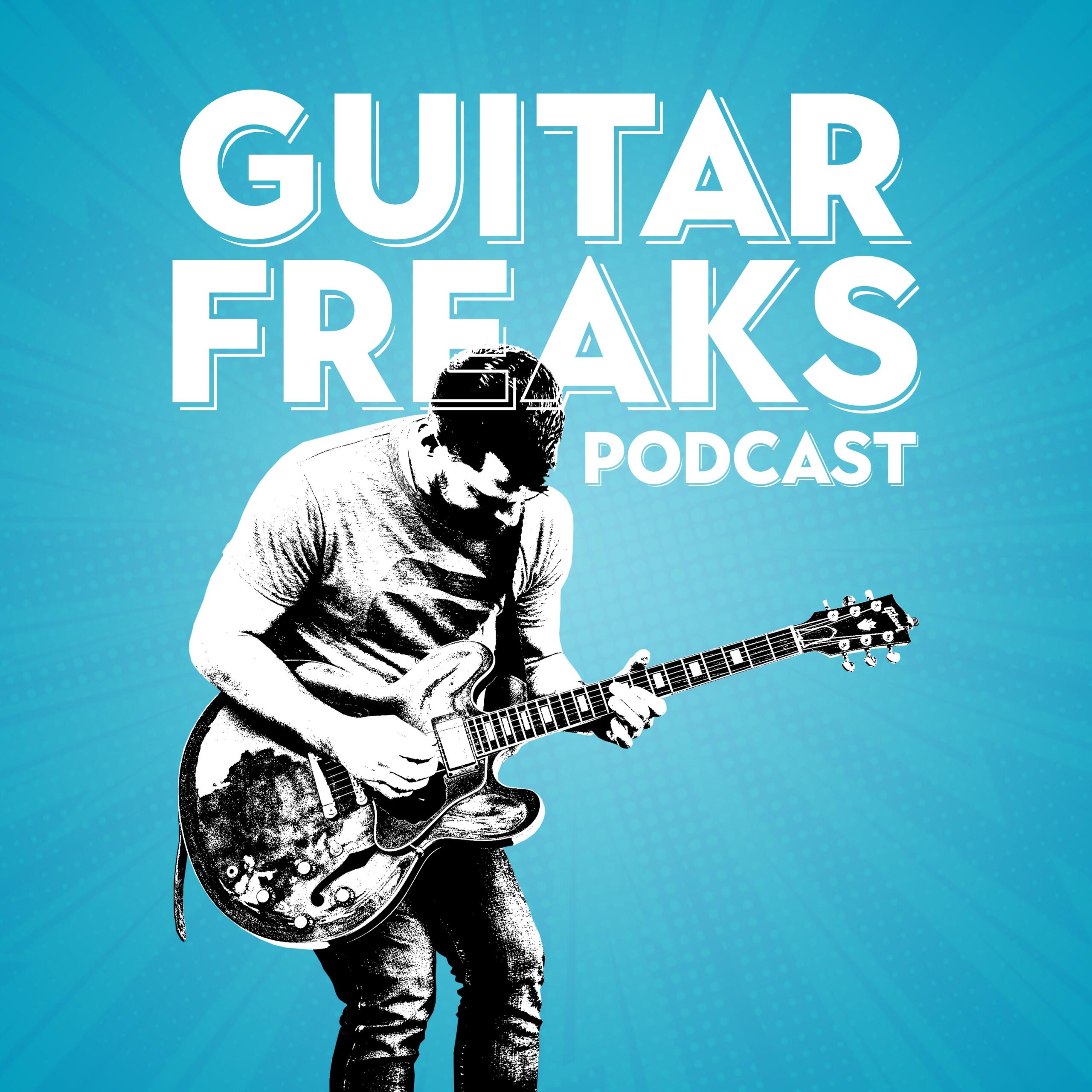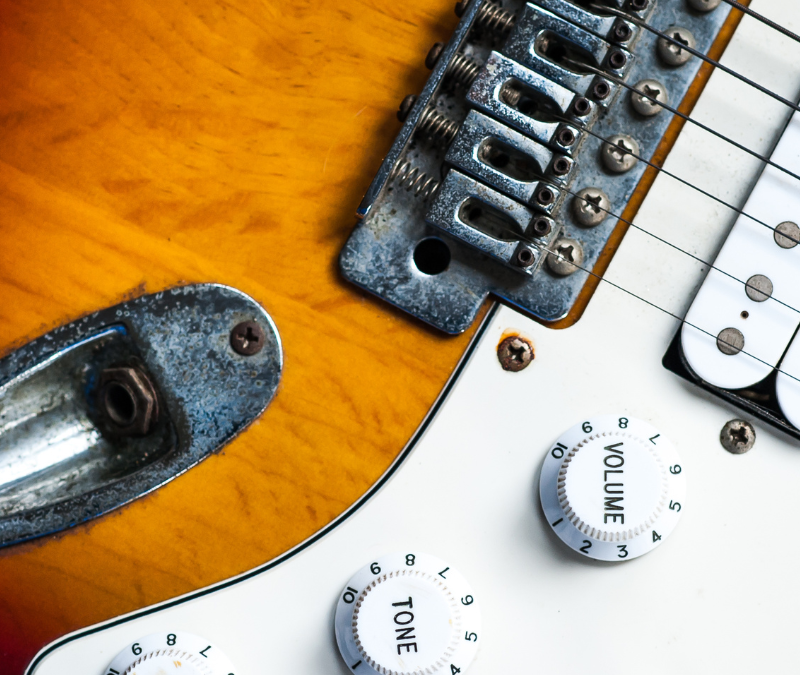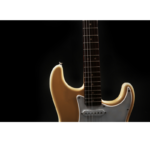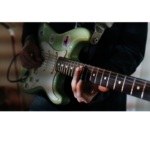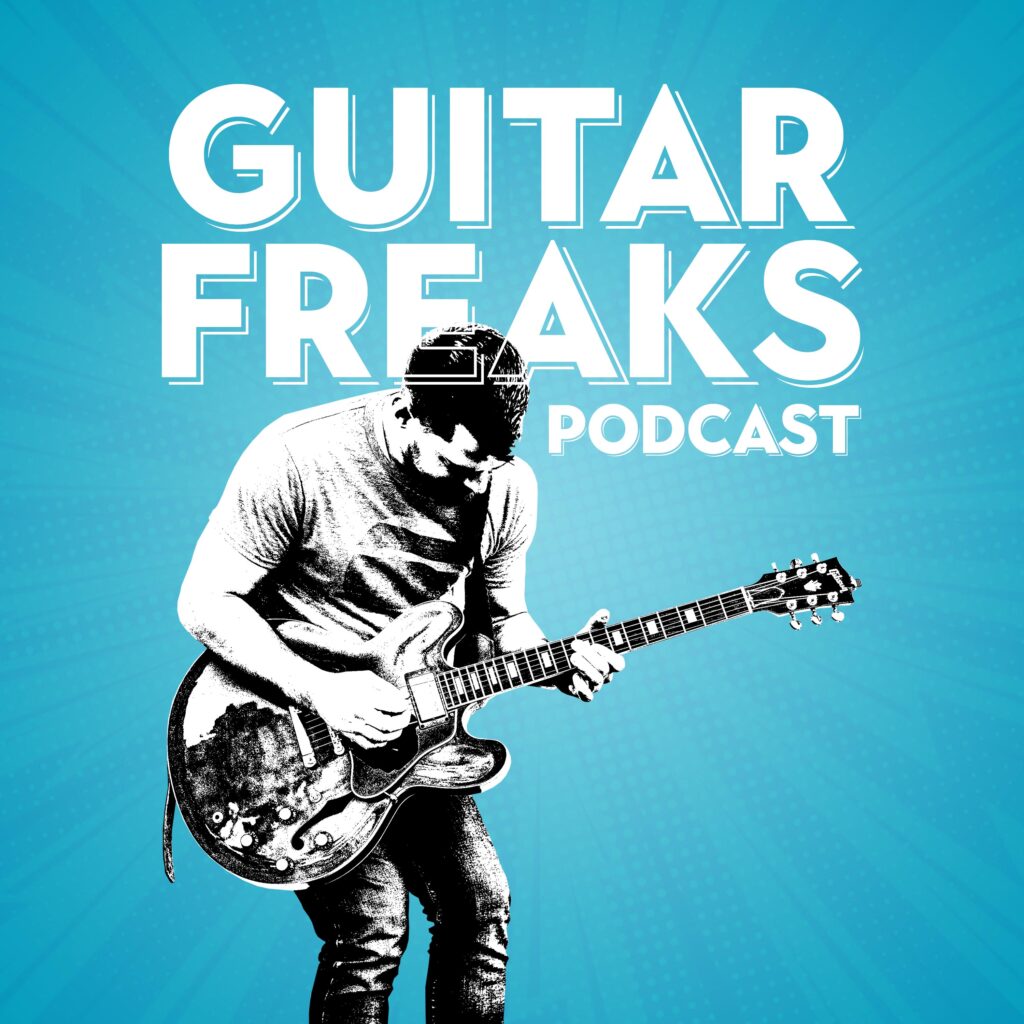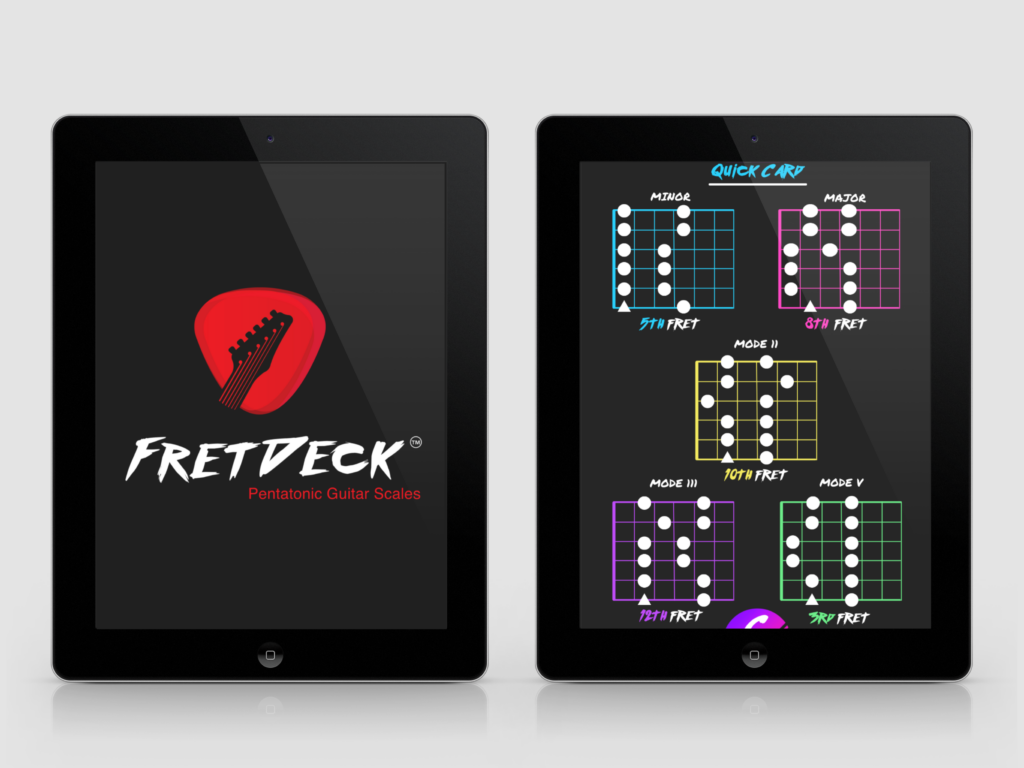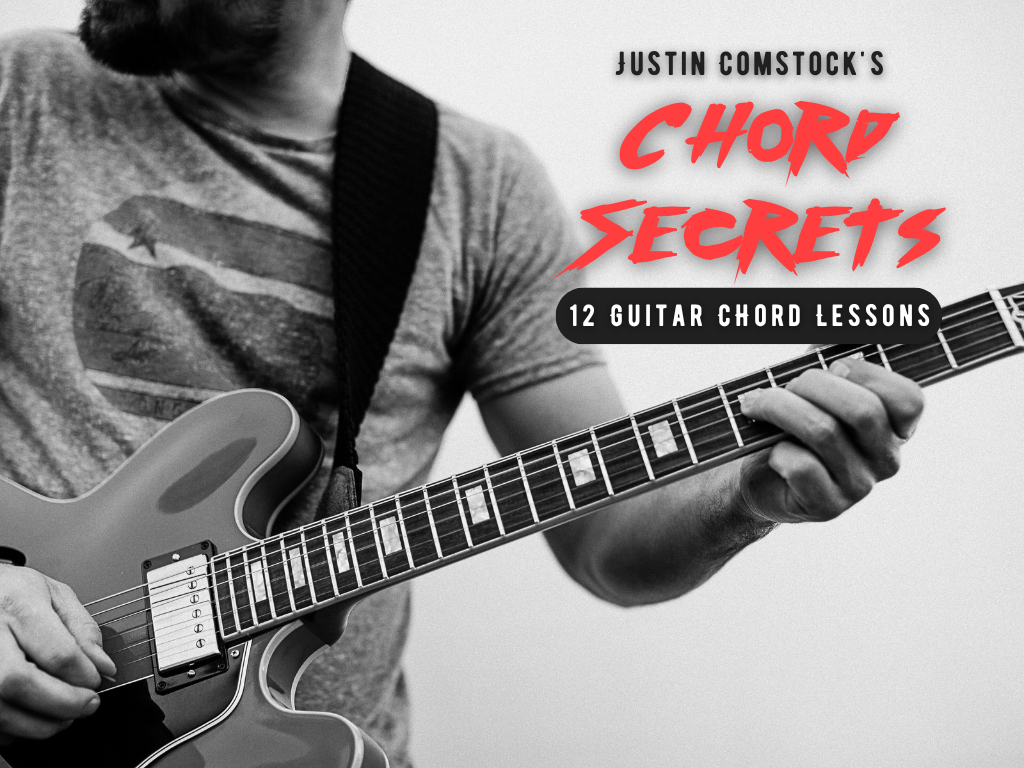Most guitarists hit a wall. They learn some basic chords—maybe a handful of barre shapes—and then spend years recycling the same progressions, never quite escaping the rut of predictability. Never unlocking the triads on guitar.
But the truth is, there’s a shortcut to sounding like you actually know your way around the neck.
It’s not about learning every scale or memorizing 200 chords.
Instead, it comes down to one deceptively simple idea:
🎸 Triads on guitar.
Triads are the skeleton key to the fretboard. They make rhythm parts punchier, solos more melodic, and your entire playing more musical. Once you understand triads, everything else—barre chords, scales, arpeggios—starts to click into place.
In this guide, you’ll discover:
✅ What triads are and why they’re the missing link for most guitar players
✅ How to find and play triads anywhere on the fretboard
✅ Pro-level tricks for blending triads into your lead guitar playing
✅ The connection between triads and the CAGED system
✅ How my eBook SoloCraft helps you master triads (and much more)
✅ How to join our Guitar Freaks Discord to get feedback and jam with other players
If you’re ready to finally break out of the same old chord shapes and unlock the fretboard, read on.
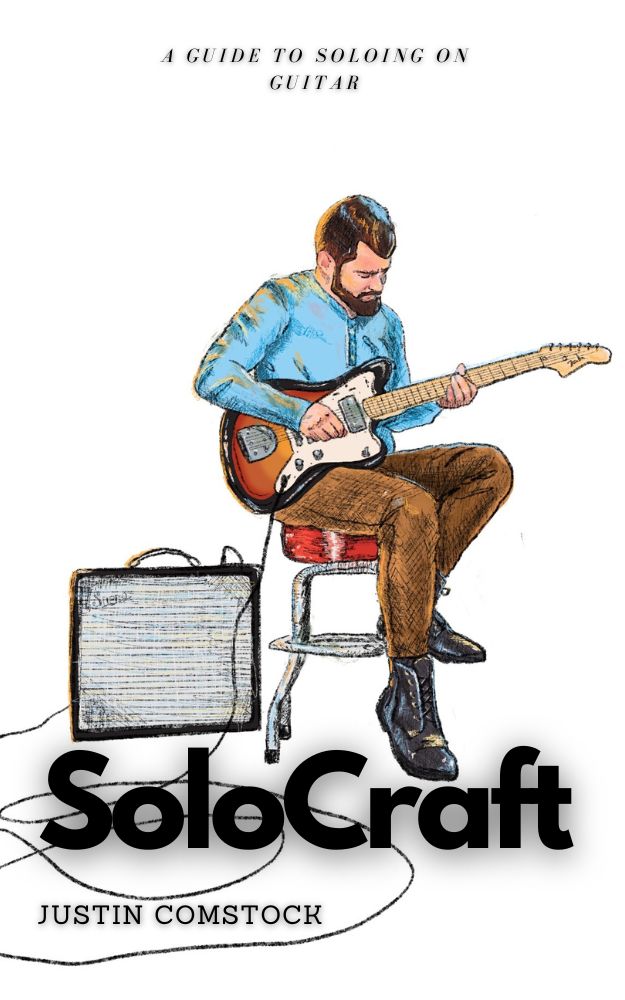
Download the ebook “SoloCraft”!
SoloCraft is the ultimate guide to mastering guitar soloing, designed for players of all levels. Packed with step-by-step lessons, pro-level techniques, and real-world examples, SoloCraft teaches you how to navigate the fretboard, craft expressive solos, and unlock your full potential as a lead guitarist. Whether you’re improvising, building speed, or adding emotion to your playing, SoloCraft gives you the tools to solo like a pro.
Download Now
What Are Triads on Guitar?
Let’s strip this back to the essentials.
A triad is the simplest form of a chord—just three notes:
1️⃣ The root (the note that names the chord)
2️⃣ The third (defines whether it’s major or minor)
3️⃣ The fifth (gives the chord stability)
For example:
- C Major Triad = C (root), E (major 3rd), G (5th)
- A Minor Triad = A (root), C (minor 3rd), E (5th)
If you’ve played an open C chord, you’ve used a triad—just with extra duplicate notes layered on top.
Here’s why you should care:
Triads give you three superpowers:
🎯 They let you play chords anywhere on the neck
🎯 They make your rhythm guitar parts more focused and professional
🎯 They give you melodic targets when you solo—so you’re not just running scales aimlessly
This is exactly how guitarists like John Mayer, Derek Trucks, and Mateus Asato create sophisticated textures without overcomplicating their playing.
Why Triads on Guitar Matter So Much
Triads are like the DNA of music. Strip away all the big, six-string chord voicings, and you’ll find a triad inside.
Here’s why they’re a game changer:
✅ Clarity: Triads keep things lean and clear, avoiding the muddy overtones you get from big barre chords.
✅ Mobility: You can move them up and down the neck without awkward stretches.
✅ Versatility: Triads work equally well for rhythm and lead. They let you blend chord tones into licks effortlessly.
✅ Connection to Scales: Triads show you exactly which notes to target when you’re soloing.
If you’re stuck in the “box shapes,” triads are your ticket out.
The Three Main Triad Shapes
Every triad comes in three inversions, each built with a different note on the bottom:
1️⃣ Root Position: Root note is lowest
2️⃣ First Inversion: Third is lowest
3️⃣ Second Inversion: Fifth is lowest
Let’s look at C Major Triad across the B-G-D strings:
🎸 Root Position:
e|---------
B|--5------
G|--5------
D|--5------
A|---------
E|---------
Notes: C (root), E (3rd), G (5th)
🎸 First Inversion:
e|---------
B|--8------
G|--9------
D|--10-----
A|---------
E|---------
Notes: E (3rd), G (5th), C (root)
🎸 Second Inversion:
e|---------
B|--13-----
G|--12-----
D|--10-----
A|---------
E|---------
Notes: G (5th), C (root), E (3rd)
How This Helps You:
✅ Instead of leaping to barre chords, you can grab the nearest triad.
✅ You can create rhythmic motion by moving between inversions.
✅ You can voice chords higher up the neck for clarity in a band mix.
This is why Nashville session players rely on triads—it’s the fastest way to build pro-level rhythm parts.
Triads and the CAGED System: A Perfect Match
If you already know the CAGED system, triads are your next logical step.
CAGED gives you:
- Five chord shapes that repeat across the neck
- A framework for connecting scales to chords
Triads fill in the missing pieces:
- They show you the essential three-note chord inside each CAGED shape.
- They help you transition smoothly between positions.
For example, if you’re playing a C chord in the “G shape” CAGED position, you can extract a triad to simplify the voicing while staying anchored in the same spot.
Pro Tip:
👉 Map out all five CAGED shapes, then isolate the triad inside each one.
This instantly clarifies your fretboard understanding.
How to Use Triads in Rhythm Guitar
One of the biggest myths about triads is that they’re only for jazz or fancy lead playing.
Not true.
Triads are the foundation of modern rhythm guitar.
When you hear clean, funky parts in pop and R&B, they’re almost always built on triads.
🎸 Try This Exercise:
- Pick a chord progression: C – F – G.
- Play triads on strings 2–4 (B-G-D) for each chord.
- Keep your shapes in one area of the neck (e.g., 5th–10th frets).
- Add syncopated rhythms and muting for groove.
This approach is miles more sophisticated than banging out open chords.
How to Use Triads in Lead Guitar
Here’s where triads become pure magic.
Instead of only thinking in scales, target triad notes in your licks.
This instantly makes your solos more melodic and connected to the harmony.
🔥 Pro Soloing Tip:
- Pick a C major triad (root position, 5th fret).
- Play a phrase ending on the E note (the 3rd).
- Slide up to the first inversion triad (8th fret) and target the C note (root).
- Finish with a bend that resolves to the G note (5th).
This creates a melodic arc that feels intentional instead of random.
Watch David Gilmour—he often outlines triads inside his solos.
Connecting Triads to Scales
Think of triads as “mini-maps” inside your scales.
For example, over C major:
- Triad notes: C, E, G
- Scale notes: C, D, E, F, G, A, B
How to Practice:
- Find a triad shape.
- Surround it with nearby scale notes.
- Create short licks that blend the two.
This is the core of my SoloCraft Method—integrating triads, scales, and phrasing into one unified approach.
Pro Tips to Hack Triads on Guitar
Here are three powerful ways to start using triads TODAY:
✅ 1. Use Triads Instead of Barre Chords
- Less fatigue, cleaner sound.
- Example: Instead of F barre chord (133211), play an F triad at 5th fret (B-G-D strings).
✅ 2. Mix Triads into Your Solos
- Alternate between single-note lines and triad voicings.
- Adds texture and dynamics.
✅ 3. Layer Triads for Double-Tracking
- Record the same progression using triads in different octaves.
- Creates a huge stereo spread without clutter.
How SoloCraft Can Help You Master Triads
If you want a clear roadmap to integrating triads into your playing, SoloCraft is your go-to resource.
🎸 Inside SoloCraft, you’ll learn:
- How to visualize triads across the neck
- How to blend them with scales effortlessly
- Pro soloing concepts to sound polished and expressive
- Step-by-step exercises to build muscle memory fast
Ready to finally see the fretboard like a pro?
It’s the most comprehensive guide I’ve ever created for serious guitarists.

Download the ebook “SoloCraft”!
SoloCraft is the ultimate guide to mastering guitar soloing, designed for players of all levels. Packed with step-by-step lessons, pro-level techniques, and real-world examples, SoloCraft teaches you how to navigate the fretboard, craft expressive solos, and unlock your full potential as a lead guitarist. Whether you’re improvising, building speed, or adding emotion to your playing, SoloCraft gives you the tools to solo like a pro.
Download Now
Join Our Guitar Freaks Discord Community
Don’t learn in isolation.
When you join our Guitar Freaks Hangout Discord, you’ll get:
✅ Feedback on your playing
✅ Exclusive backing tracks
✅ Live Q&A sessions
✅ Free access to Fret Logic—my ebook on fretboard visualization
🎸 Join here and grab your free copy of Fret Logic:
👉 Join the Discord
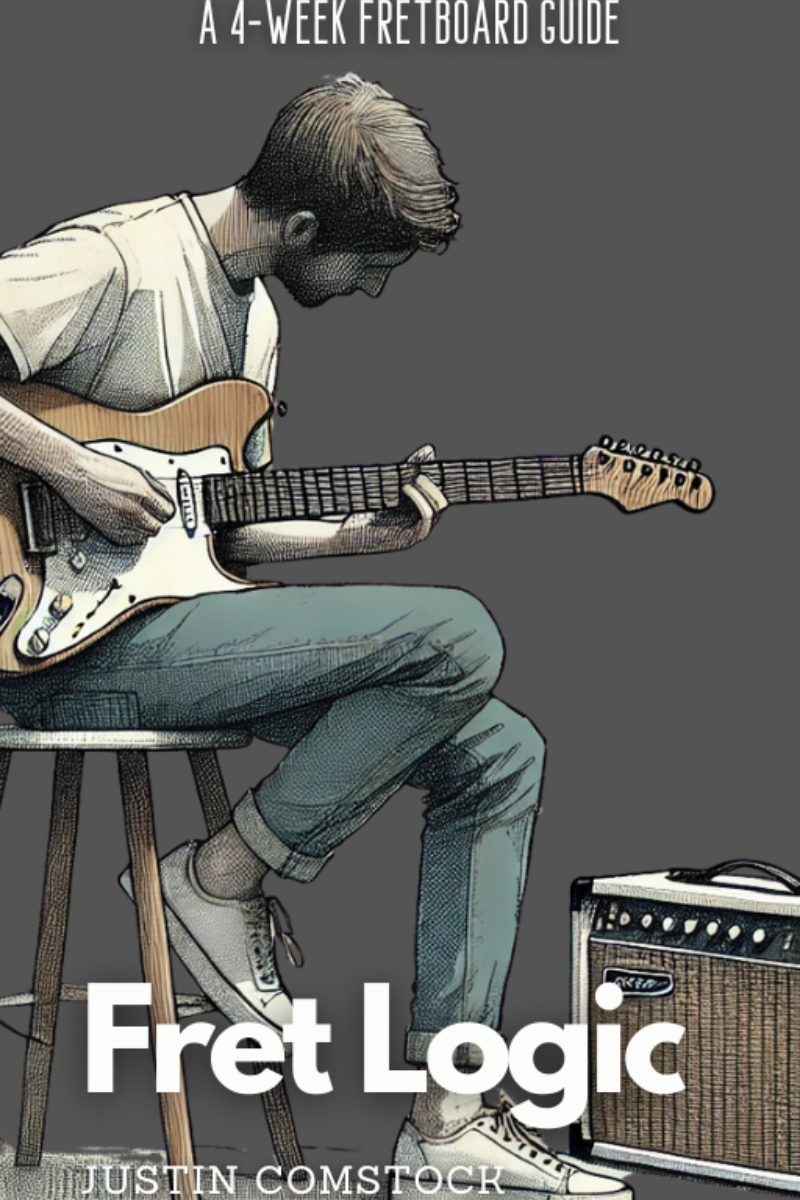
Join Guitar Freaks Hangout on Discord! 🎸
Get Fret Logic FREE!
Join the Guitar Freaks Hangout Discord and get exclusive access to my entire e-book, Fret Logic! Master the fretboard and elevate your solos with this comprehensive guide.
👉 Don’t miss out—join now and download your free copy!
Final Thoughts: Make Triads a Daily Habit
If you take one thing from this guide, let it be this:
Triads are the fastest way to unlock the fretboard.
Here’s your action plan:
1️⃣ Learn the three main triad inversions for major and minor chords.
2️⃣ Practice them in every key.
3️⃣ Blend them into your rhythm and lead playing.
4️⃣ Use SoloCraft to integrate them with scales and phrasing.
5️⃣ Join the Guitar Freaks Discord to stay inspired and accountable.
Triads aren’t complicated. They’re just underused.
The more you practice them, the more natural—and powerful—they become.
Related Reading (Internal Links)
👉 Guitar Fretboard Notes Diagram: Your Ultimate Map to Musical Freedom
Ready to transform your guitar playing forever?
👉 Check out TrueFire’s huge library of triad guitar lessons here
